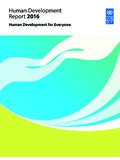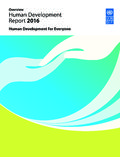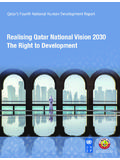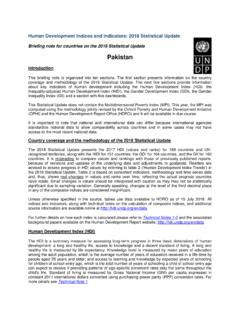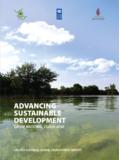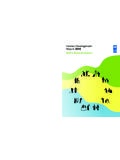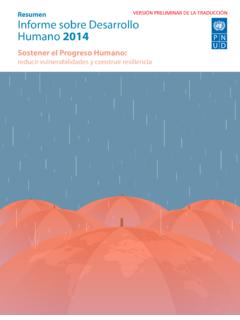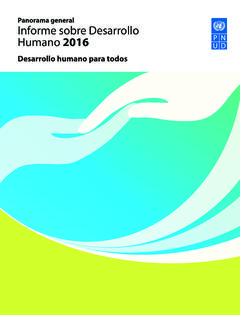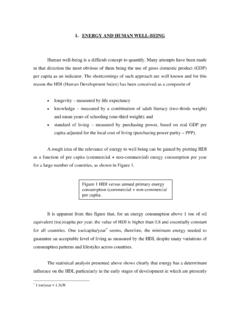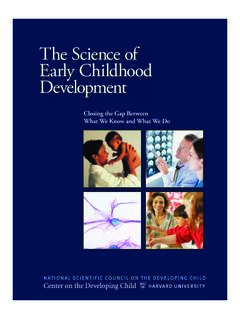Transcription of COVID-19 AND HUMAN DEVELOPMENT
1 2020 HUMAN DEVELOPMENT PERSPECTIVES. COVID-19 AND. HUMAN DEVELOPMENT : Assessing the Crisis, Envisioning the Recovery The team that created this report includes Pedro Concei o, Jonathan Hall, Admir Jahic, Milorad Kovacevic, Shivani Nayyar, Anna Ortubia, Fernanda Pavez, Carolina Rivera and Heriberto Tapia. They thank Abdallah Al Dardari, Mandeep Dhaliwal, Oscar Garc a, Raymond Gilpin, Balazs Horvath,Vito Intini, Lars Jensen, Brian Lutz, Luis Felipe L pez-Calva, Marcela Mel ndez, Marta Roig, Isabel Saint-Malo, Ben Slay and an anonymous referee for their comments. HDRO. acknowledges financial support from the Republic of Korea.
2 Copyright @ 2020 By the United Nations DEVELOPMENT Programme 1 UN Plaza, New York, NY 10017 USA. All rights reserved. No part of this publication may be reproduced, stored in a retrieval system or transmitted, in any form or by means, electronic, mechanical, photocopying, recording or otherwise, without prior permission. General disclaimers. The designations employed and the presentation of the material in this publication do not imply the expression of any opinion whatsoever on the part of the HUMAN DEVELOPMENT Report Office (HDRO) of the United Nations Develop- ment Programme (UNDP) concerning the legal status of any country, territory, city or area or of its authorities, or concerning the delimitation of its frontiers or boundaries.
3 Dotted and dashed lines on maps represent approximate border lines for which there may not yet be full agreement. The findings, analysis, and recommendations of this publication do not represent the official position of the UNDP or of any of the UN. Member States that are part of its Executive Board. They are also not necessarily endorsed by those mentioned in the acknowledg- ments or cited. The mention of specific companies does not imply that they are endorsed or recommended by UNDP in preference to others of a similar nature that are not mentioned. Where indicated, some figures in the analytical part of the Report were estimated by the HDRO or other contributors and are not necessarily the official statistics of the concerned country, area or territory, which may be based on alternative methods.
4 All the figures used to calculate the HUMAN DEVELOPMENT composite indices are from official sources. All reasonable precautions have been taken by the HDRO to verify the information contained in this publication. However, the published material is being distributed without warranty of any kind, either expressed or implied. The responsibility for the interpretation and use of the material lies with the reader. In no event shall the HDRO and UNDP be liable for damages arising from its use. Printed in the USA, by AGS, an RR Donnelley Company, on Forest Stewardship Council certified and elemental chlorine-free papers.
5 Printed using vegetable-based ink. 2020 HUMAN DEVELOPMENT PERSPECTIVES. COVID-19 AND HUMAN . DEVELOPMENT : Assessing the Crisis, Envisioning the Recovery Empowered lives. Resilient nations. COVID-19 and HUMAN DEVELOPMENT : Assessing the Crisis, Envisioning the Recovery Contents Executive Summary .. 3. Introduction ..4. COVID-19 : A systemic crisis in HUMAN DEVELOPMENT ..5. The propagation of the crisis to vulnerable groups ..7. The propagation of action to face COVID-19 .. 8. Nonpharmaceutical interventions .. 8. Economic 9. COVID-19 and history: A costly, long-lasting and regressive crisis?
6 11. Economic shock: The 2008 global financial 11. Health shock: Ebola in West Africa ..12. Natural hazard shock: Hurricane A HUMAN DEVELOPMENT perspective on how to respond to 13. People's capabilities and the health response .. 14. Access to 14. Safe space and balanced care 18. Inequality in public health and innovation systems .. 19. People's capabilities and the economic response ..20. Beyond COVID-19 : Transforming our world? .. 22. 25. 2 | 2020 HUMAN DEVELOPMENT PERSPECTIVES. COVID-19 and HUMAN DEVELOPMENT : Assessing the Crisis, Envisioning the Recovery Executive Summary The COVID-19 pandemic is unleashing a HUMAN DEVELOPMENT crisis.
7 On some dimensions of HUMAN DEVELOPMENT , conditions today are equivalent to levels of deprivation last seen in the mid-1980s. But the crisis is hitting hard on all of HUMAN DEVELOPMENT 's constitutive elements: income (with the largest contraction in economic activity since the Great Depression), health (directly causing a death toll over 300,000 and indirectly leading potentially to an additional 6,000. child deaths every day from preventable causes over the next 6 months) and education (with effective out-of-school rates meaning, accounting for the inability to access the internet in primary education expected to drop to the levels of actual rates of the mid-1980s levels).
8 This, not counting less visible indirect effects, including increased gender- based violence, yet to be fully documented. The pandemic was superimposed on unresolved tensions between people and technology, between people and the planet, between the haves and the have-nots. These tensions were already shaping a new generation of inequalities . pertaining to enhanced capabilities, the new necessities of the 21st century, as defined in the 2019 HUMAN DEVELOPMENT Report. But the response to the crisis can shape how those tensions are addressed and whether inequalities in HUMAN DEVELOPMENT are reduced.
9 This note takes a capabilities approach to document the severity of the unfolding HUMAN DEVELOPMENT crisis. Such an approach implies an evaluative framework to assess the crisis and shape the policy response that emphasizes the potential for people to be and do what they aspire in life as opposed to material resources or economic activity. To assess the crisis, the note draws from original simulations that are based on an adjusted HUMAN DEVELOPMENT Index . with the education dimension modified to reflect the effects of school closures and mitigation measures and that incorporate current projections of gross national income (GNI) per capita for 2020.
10 The simulations suggest conditions today would correspond to a steep and unprecedented decline in HUMAN DEVELOPMENT . With almost 9 in 10 students out of school and deep recessions in most economies (including a 4 percent drop in GNI per capita worldwide), the decline in the index reflecting a narrowing in capabilities-- would be equivalent to erasing all the progress in HUMAN DEVELOPMENT of the past six years. Importantly, if conditions in school access are restored, capabilities related to education would immediately bounce back while the income dimension would follow the path of the economic recovery post-crisis.
